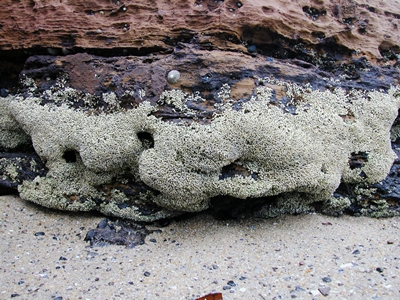Other Names
- Sydney Coral
General Description
In members of this genus the tube has two major dorsal keels. An inter-radiolar membrane is present. Galeolaria is the only genus of serpulid worms to have opercula ornamented with movable calcareous spines. Individuals up to about 2 cm long, colonies may be massive.
Biology
Recent DNA studies have shown that this very common serpulid worm comprises two distinct species: Galaeolaria caespitosa occurs in south-western Australia to Port Phillip Bay and to Tasmania, while Galeolaria geminoea occurs in New South Wales and southern Queensland. Although the two species are genetically very distinct, they cannot be separated morphologically.
Habitat
Hard substrates such as intertidal rocky shores and pier piles.
Reefs
Coastal shores
Distribution guide
Southern Australia.
Species Group
Depth
Water Column
Max Size
2 cm
Diet
Organic matter
Commercial Species
No
Global Dispersal
Native to Australia
Species Code
MoV 3343
Identify
Conservation Status
- DSE Advisory List : Not listed
- EPBC Act 1999 : Not listed
- IUCN Red List : Not listed





